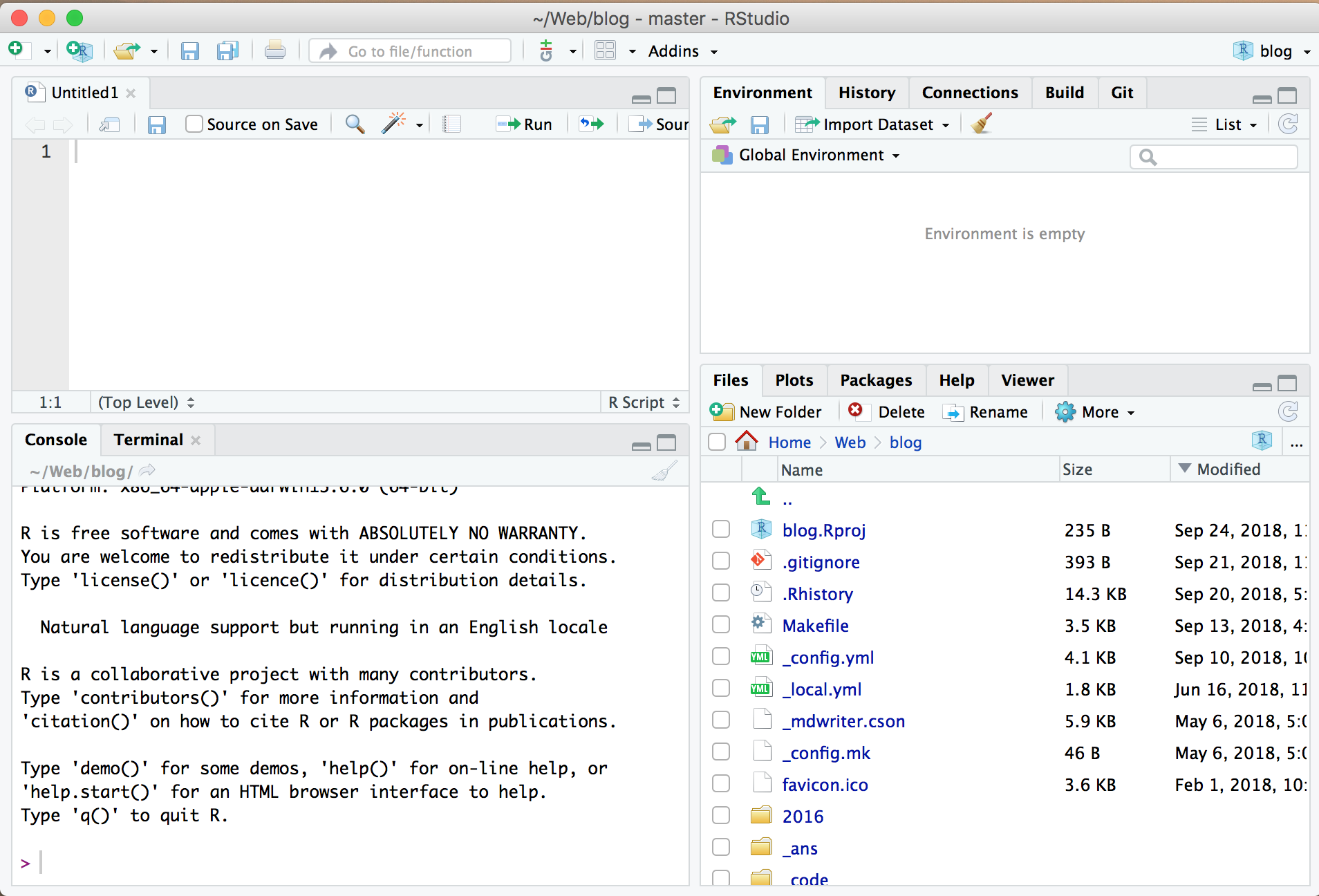Class 6: Using R and RStudio
Computing for Molecular Biology 1
Andrés Aravena, PhD
26 October 2020
Analyzing Data
for fun and science
Many disciplines, including Molecular Biology and Genetics, have become more and more data driven.
Starting today, we will use R, a free software for data analysis
Most users of R are molecular biologists, but it is also used by economists, psychologists and marketing specialists
R and RStudio
How to use RStudio
Install R and RStudio in your computer
You have to execute RStudio
Then you will see a screen like this…

Command line
RStudio, as almost all serious programs, is controlled by the keyboard
The mouse can be used for some shortcuts,
but the real deal is the keyboard
A goal of this course is to become comfortable with the keyboard
These tools are for people who read books and don’t watch TV
The keyboard: your real friend
This is the Turkish version
We use the keys `, ", {, }, [,], and Tab.
The keys in red are “dead keys”.
Learn how to use the keyboard
- We need to use
`,",{,},[,], and Tab - We use
`a lot. Find it! - The keys in red are “dead keys”
- They do not write until you press another key
- You can use them to write foreign words
- for example “El Niño”, “naïve”, “voilà”
- Press
AltGr+,first, and then SPACE to get the symbol`
Important key names
#: Hash. Used for comments$: Dollar. Used for column names{and}: Braces, curly brackets[and]: Brackets, used for indices`: Back tick. Used for code'and": single quote and double quote. Used for text/and\: slash and backslash
Talking with the computer
R version 4.0.2 (2020-06-22) -- "Taking Off Again"
Copyright (C) 2020 The R Foundation for Statistical Computing
[…]
Type 'demo()' for some demos, 'help()' for on-line help, or
'help.start()' for an HTML browser interface to help.
Type 'q()' to quit R.
>This > symbol is called prompt
You do not write the > part. This is a message from the computer to you
You write after the prompt
prompt [präm(p)t]
verb
- Assist or encourage (a hesitating speaker) to say something: “What do you want?” he prompted.
- Computing (of a computer) request input from a user.
From “New Oxford American Dictionary”
The meaning of >
(An interactive session)
- The computer shows the prompt
> - You write some commands using the keyboard
- You finish by pressing Enter or Return
- The computer executes your commands
- When the execution finishes you get a new prompt
and repeat
Tab is your friend
In Rstudio you can press Tab and get superpowers!
- The computer will propose alternatives depending on the context
- You can select the good one using the arrows
- If there is only one option then it is completed automatically
- You write faster and make less mistakes
You can also repeat and edit previous commands using the arrows
You can delete all the line using Escape
Using R as a calculator
Writing Integer Numbers
Write the number after >. Do not write >
[1] 42The grey part is what we write, the blue part is the computer’s response
How to write “one half”
Writing Numbers, with decimals
Most countries use , to decimal separator
In USA they use . as separate the integer and decimal parts
In theory you can use any of them, but it is easier to use dot .
Writing Numbers, large and small
Compare 520000000000 against 52000000000
Are they the same? Which one is bigger?
It is better to use exponential notation
52 × 1010 versus 52 × 109
In the computer we write powers of 10 as E
52E10 versus 52E9
E notation is scientific notation
- 1 milli is 1E-3
- 1 micro is 1E-6
- 1 nano is 1E-9
- 1 pico is 1E-12
- 1 kilo is 1E3
- 1 mega is 1E6
- 1 giga is 1E9
- 1 tera is 1E12
See more at https://en.wikipedia.org/wiki/Metric_prefix
Exponential notation is unambiguous
There are different names for the same number, and different numbers for the same name
- One million is 1E6
- One milliard is 1E9 (thousand millions or short billion)
- One billion is 1E12 (long billion or short trillion)
The short names are mostly used in USA, the long names are used in most other countries.
See more at https://en.wikipedia.org/wiki/Billion
Basic arithmetic operations
Basic arithmetic operations
Operation’s priority
Order matters
PEMDAS
“Parentheses, Exponents, Multiplication and Division, Addition and Subtraction”
- Parentheses (simplify what is inside)
- Exponents
- Multiplication and Division (from left to right)
- Addition and Subtraction (from left to right)
(Please Excuse My Dear Aunt Sally)
Evaluation goes left to right
Compare 2-3-4 v/s 2-(3-4)
[1] -5[1] 3Evaluation goes left to right
Compare 2/3/4 v/s 2/(3/4) \[\frac{\frac{2}{3}}{4}=\frac{2}{3}\cdot\frac{1}{4}=\frac{2}{12}\] \[\frac{2}{\frac{3}{4}}=\frac{2}{1}\cdot\frac{4}{3}=\frac{8}{3}\]
Say what you mean
Use the language correctly
This is important in computing, in science, and in life.
Functions
If we can calculate
[1] 100How do we calculate \(\sqrt{100}\)?
[1] 10Functions
If we can calculate
[1] 100How do we calculate \(\log_{10}(100)\)?
[1] 2Functions
log(): Logarithmexp( ): exponentialabs( ): absolute valuesign( ): sign -1, 0 or 1floor(x): Integer just belowxceiling(x): Integer just afterxround(x): Integer closest tox